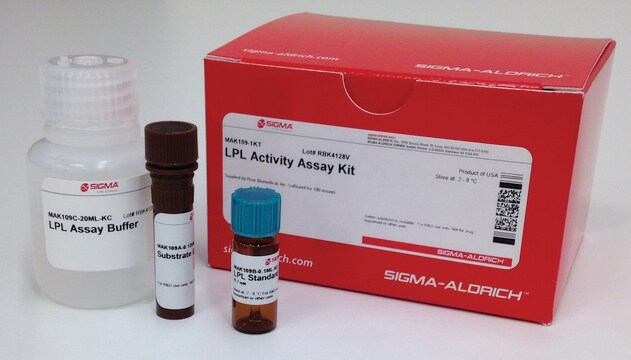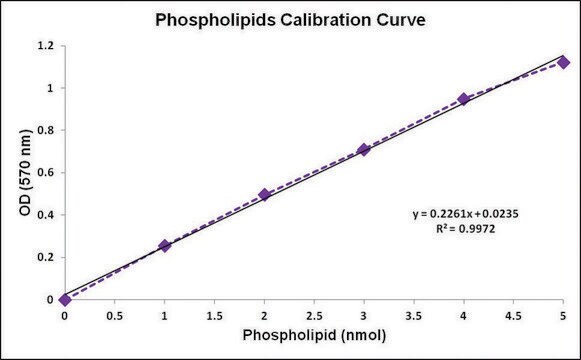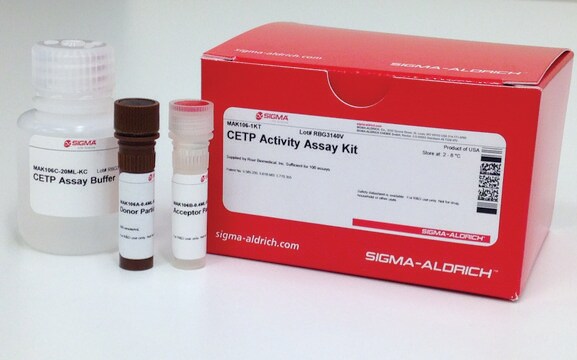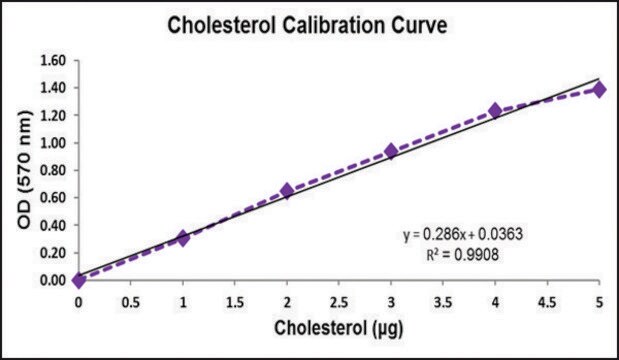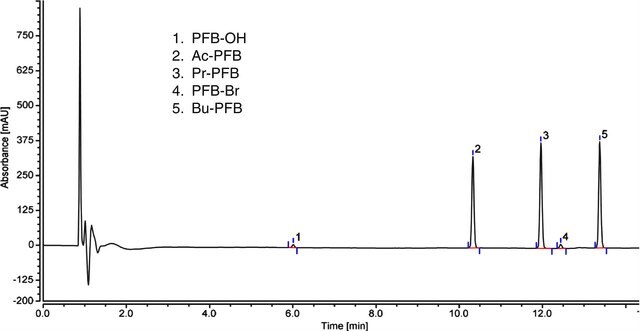推荐产品
用途
sufficient for 100 fluorometric tests
應用
pharmaceutical
檢測方法
fluorometric
相關疾病
cardiovascular diseases
儲存溫度
2-8°C
基因資訊
human ... PLTP(5360)
一般說明
Phospholipid transfer protein (PLTP) is a protein present in normal human plasma. PLTP transfers phospholipids among lipoproteins in plasma.
適合性
Suitable to determine Phospholipid transfer protein (PLTP) activity in plasma or serum (fresh or frozen) as well as other sources of PLTP.
原則
The PLTP Activity Assay Kit includes proprietary substrates to detect PLTP mediated transfer of fluorescent substrate. Transfer activity results in increased fluorescent emission intensity (λEx = 465 nm/λEm = 535 nm) from the assay.
儲存類別代碼
10 - Combustible liquids
Natacha Bellanger et al.
Arteriosclerosis, thrombosis, and vascular biology, 31(7), 1675-1681 (2011-04-30)
Low high-density lipoprotein (HDL) cholesterol levels are frequently observed in familial hypercholesterolemia (FH) and might be associated with functional alterations of HDL particles that may influence their efficaciousness in the reverse cholesterol transport pathway. We evaluated key steps of the
Alexina Orsoni et al.
Journal of lipid research, 53(4), 767-775 (2012-02-18)
In familial hypercholesterolemia (FH), low HDL cholesterol (HDL-C) levels are associated with functional alterations of HDL particles that reduce their capacity to mediate the reverse cholesterol transport (RCT) pathway. The objective of this study was to evaluate the consequences of
Ryan J Henderson et al.
Drug development and industrial pharmacy, 35(9), 1139-1146 (2009-04-22)
To investigate how different formulations of Amphotericin-B (Amp-B) affect the activity of phospholipid transfer protein (PLTP) when incubated with hyperlipidemic and normolipidemic plasma at physiological temperature (37 degrees C). Six hyperlipidemic and six normolipidemic plasma samples were collected and tested
Sander J Robins et al.
Atherosclerosis, 228(1), 230-236 (2013-03-13)
Cholesteryl ester transfer protein (CETP) and phospholipid transfer protein (PLTP) are two genetically-related plasma proteins involved in the exchange of cholesteryl esters and phospholipids between high-density lipoproteins (HDL) and other lipoproteins. Although low CETP and high PLTP activity both result
Marta Marchesi et al.
British journal of pharmacology, 164(5), 1460-1468 (2011-04-14)
Besides a significant reduction of low-density lipoprotein (LDL) cholesterol, statins moderately increase high-density lipoprotein (HDL) levels. In vitro studies have indicated that this effect may be the result of an increased expression of apolipoprotein (apo)A-I, the main protein component of
我们的科学家团队拥有各种研究领域经验,包括生命科学、材料科学、化学合成、色谱、分析及许多其他领域.
联系技术服务部门